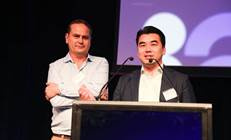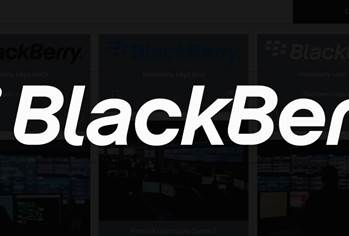Human Resources has traditionally been considered a transactional function, often with a risk management or compliance mindset. However, executives say the transformation of the function in recent years has seen it become a key enabler of business growth.

Gartner's recent survey of more than 550 HR leaders in July 2021 reveals that the top priorities for the HR function for 2022 include more strategic concerns such as organisational design and change management (48 per cent), current and future leadership bench (45 per cent) and future of work (42 per cent).
Organisations are realising the benefits of efficiency and effectiveness as HR becomes digitised and data is unlocked, driving value for the business.
According to Liam Hayes, global chief people officer at Aurecon, “The benefit of going on a digital transformation journey within HR is it enables you to free up capacity within the HR team to actually shift from being a what's been traditionally known as a compliance function, or very much an administration process-driven function to be a function that is there to enable instance, performance and business growth,” he says.
In the digitalisation journey, Hayes says that taking a step back to analyse potential roadblocks and issues that may arise is essential, and that simply implementing a new tool will not always fix the problem.
“I think the key is always being clear around the problem that you're trying to solve, if you take onboarding as the example, it's a clear problem that HR took a leadership role to solve [but we were] never going to solve it on our own,” says Hayes.
“And so I think, if you can clearly articulate the problem that needs to be solved, it's very easy then to get buy-in from other parts of the organisation to come together to solve it, where they can clearly see that they have a vested interest in solving that problem.”
Aurecon utilised design thinking as a method of transforming the HR function of the business and embedding it across all operations.
“I think for HR, our job is to take a lead role. But we should never forget with employee experience if we take a human-centred design approach, we have to co-create it with our client groups. I think it's really important,” says Hayes.
“I think it's a mistake that HR and a lot of support enterprise support service functions have made in the past is we design things and give them to the business. And often then we wonder why they either don't take or they don't work. By taking that human centred design approach and actually getting diverse perspectives from the end user cohort, you end up getting a much better product that you tend to find the change management also then is much, much simpler as well."
Automation
The operations of HR are moving so fast, in fact, that Anna Buber-Farovich, chief people and culture officer at BNPL provider Zip, believes that the transactional elements will be entirely automated within the next five to 10 years.
“We'll see a lot of automation that is coming into HR, and all this transactional work that people used to take so much pride in… will no longer exist,” she says.
As a method of cross-functional communication and success, Buber-Farovich introduced a business partnering model to Zip’s operations, allocating a partner to each business unit and leader.
“[HR is] a business function like any other and our role is to drive business results. I don't see myself as a support function I never have, it is from a budgeting perspective, maybe, but I'm first and foremost a business driver.”
The shift to driving business growth is one that Natalie Kidd, chief people and purpose officer at Intrepid Travel echoes.
Kidd saw that hiring, supporting, and developing good people for the organisation saw goals achieved more quickly and easily, highlighting HR as key to business success.
“The absolute key thing is communicate, communicate, communicate, you can't communicate too much. And that's something that we've had good feedback from the teams on how we have kept the business updated,” says Kidd.
“In that communication, part of it is just showing that vulnerability… we all have our ups and downs through the various lockdowns. Now, many of our team members are juggling home-schooling with work."
Rather than segmenting the business in the process of transformation, Kidd says that the people component is one part of the overall transformation, touching every element of the business.
In a hybrid environment where managers and employees have dramatically less face-to-face time, Gartner's research reveals that managers who lead with empathy have three times the impact on employee performance that those who do not.
According to the study, "Managers who lead with empathy develop high levels of trust with their employees, create a culture of transparency and acceptance within their teams, and prioritise people over processes. They also contextualise performance and behaviour — proactively asking questions and seeking information to better understand the specifics of their direct reports’ contexts."
Ensuring that people are engaged and performing well is crucial to the success of the broader transformation, according to Kidd.
“If we're clear in the direction we're heading, and then we're getting the right people, we're developing them and managing them the right way and giving them the tools. And that's how we achieve the outcomes,” she says.
Connection
The element of human connection is one that James Comer, head of HR ANZ at Cisco, raises as being especially challenging during the pandemic.
For new starters who had never set foot in the bricks and mortar office, and for existing employees enduring long periods of isolation, Comer says it fell to the leaders in the organisation to address these challenges.
"They made sure first of all, that there was an awareness and there was a knowledge, but also made sure that these people were then plugged into those people in the community that could help them with their IT challenges that could get them comfortable with our systems and processes, reach out to my team in people and communities and feel like that they could plug into the fibre, you know, the DNA of what Cisco meant," he says.
Cisco sought to build human connection in the workplace through its digital tool, Team Space, which allowed employees to connect with their leaders on a weekly basis.
The origins of Team Space, said Comer came about from a study seeking to understand the key needs of individuals and teams to be successful.
“We found that people need regular attention, not feedback, attention. We found that people obviously perform at their best and have a great employee experience when they're playing to their strengths. And by strengths, we don't necessarily mean things that they're good at, we mean things that energise them,” Comer says.
Team Space enabled the business leaders to give their time and attention to the individual success of each team member, which led to invaluable outcomes for employee wellbeing.
"What we found was that this became a channel for people to also talk about their wellbeing and the number of challenges that we uncovered through the use of that technology and that tool that is so core to our employee experience about people's wellbeing was staggering."
As the HR function evolves, human-centred approaches are increasingly being adopted by businesses to build a strong foundation in the midst of transformation.
Employee engagement is a critical area where HR leaders play a key role.
According to Intrepid Travel's Kidd, while all managers have a role to play in delivering a positive employee experience, it is the HR teams that set up the structures to best enable it.
"If you get the experience right, that helps in the creation of engagement. And for us, as a business where I've talked about us as being a people led business, we're also a purpose led business. And so we really put purpose at the heart of everything we do. And that's a big engagement piece for a team members around the world as well. So I think both the employee experience and our purpose as a business are really what drive the engagement."



.png&h=140&w=231&c=1&s=0)






 iTnews Executive Retreat - Security Leaders Edition
iTnews Executive Retreat - Security Leaders Edition












_(1).jpg&h=140&w=231&c=1&s=0)



